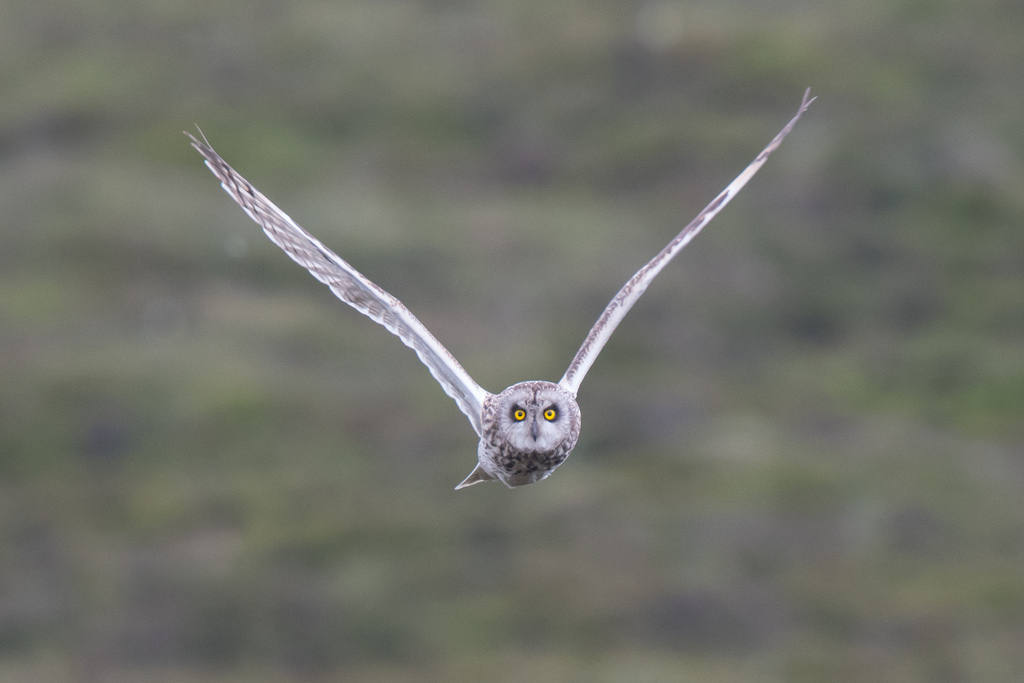
Tim writes: I love the eye contact in this photograph, and also that it has a moorland, not sky background. Those intense yellow eyes seem to make the owl jump right out of the picture. I took the photograph high on the Peak District moors in South Yorkshire. They nest on the ground, usually among deep heather and their numbers vary greatly because of their dependence on Field Voles, which display great population cycles. This year seems to be a bumper vole year, though there aren’t many Short-eared Owls nesting on the Peak District grouse moors.
Taken with Nikon D500 with Nikkor 300mm f4 lens plus 1.4x converter at f7.1 1/640 second ISO 1250
Mark writes: apologies for the slightly late appearance of this post and the non-appearance of Paul Thomas’s Unreliable History of Birdwatching today) – both were due to technical issues (ie I was technically incompetent!).
[registration_form]
Cheers Mark, I was missing both!
Wonder why there weren’t many shorties nesting Tim…..oh, wait a minute, maybe I can guess…..they very occasionally are reported to take grouse chicks I hear……hmmm…..
There are not many on the Peak District non grouse moors either.
They certainly have bred on non-grouse moors in the Peaks this year, and very nice to see they were too! Seeing as I haven’t covered all potential areas myself this year I’ll wait until I next speak to members of the local raptors to groups to get an overall assessment of how the year went. In the meantime what are your survey results, Trapit? Any data on numbers, the percentages on grouse and non-grouse moors respectively, breeding productivity in the two areas, and comparison with (lets say) the preceding years back to 1960? Do please share your survey data, Trapit.
I believe a whiff of suspicion may be emerging, regarding Short eared Owls on driven grouse moors in the Peak District.
However, I was merely pointing out that even in good vole years, as this seems to have been, there are large areas where breeding is rarely attempted, on ground where they would be free from persecution. Even when birds are present through the winter ,and into early spring, they seem to have an urge to move on.
Possibly the Staffordshire moors are the most regular exception to this rule, or so I am told.
That isn’t what’s happened this year which has including a particularly notable (and very welcome) breeding record on non-grouse moorland well to the south of the typical breeding range. Elevation has been something of an issue until late with Peak breeding Shorties tending to go for higher ground meaning that they inevitably end up near grouse moors (and therefore liable to persecution), as this management dominates much of the land use above 350m, even when the birds are actually nesting (and frequently hunting) away from the managed heather. Incidentally, the highest densities of breeding Short-eared Owls I’ve ever come across was in 2013 on grass dominated moorland in the northern Peak District where grouse shooting had long ceased.
Excellent news.